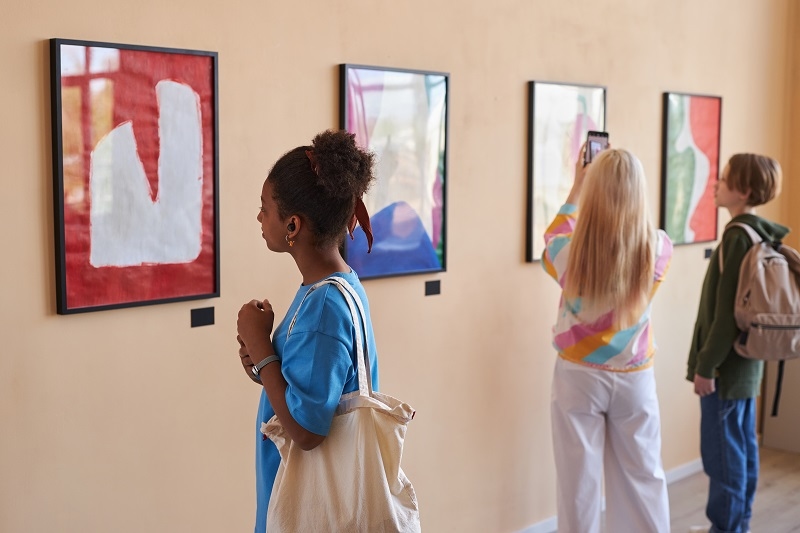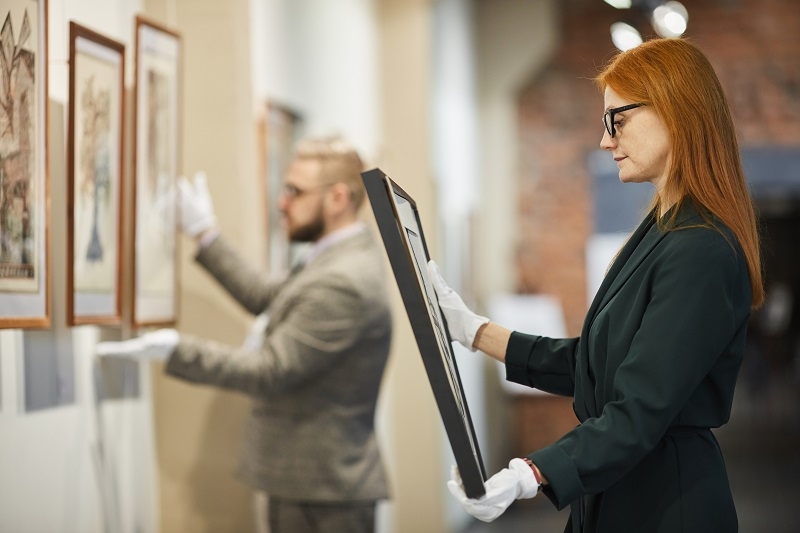
Art, being a mirror of society, has always reflected our past, our present, and sometimes even our future. And what is the way we experience and perceive art? This is where the entering of art galleries takes place. They are not merely spaces where paintings or sculptures are to be found but spaces where culture breathes, creativity flourishes, and communities are linked. In this blog, we shall discuss the purpose of art galleries, their impact on the art market, and the way they invoke creativity in the person and the society.
Art galleries do not only serve to hang paintings on the walls. They are cultural centers that affect innovativeness, trends, and how art is viewed in society.
Art galleries play one of the most significant roles is the one of introducing artists and the audience. Galleries provide the artists with a learning opportunity to present their work, obtain feedback, and be recognized. In the absence of galleries, most of the creative minds could go undetected. The visitors, in their turn, get an opportunity to view art close up, learn the story of each work, and even meet the artists face to face with exhibitions or talks. This communication has the potential to motivate new concepts and establish a society that appreciates innovation.
Workshops, live demonstrations, and community events are common in art galleries and are usually participatory. These activities enable anyone of any age to have an opportunity to engage his/her creative side, be it painting, sculpting, or even digital art. Galleries foster creativity and assist people in fulfilling their potential by offering them such opportunities.
Lots of art galleries are devoted to the conservation of historical and cultural works. They also serve as the custodians of culture, where the traditional art forms, indigenous art, and historical art can be secured to be preserved to maintain their existence in future generations. By visiting these galleries, people can connect with history and gain a deeper understanding.
Art galleries are also a critical part of the art economy. Understanding the role of the gallery art market helps us see how art contributes to both culture and livelihood.
The gallery art market enables artists to sell their art and become financially supported. Galleries tend to be selective in their collections, in a way that they make the selection of works that will be attractive to collectors and art lovers across the world.
The recommendation of a gallery can greatly enhance the fame of an artist. When a new artist is introduced in an established gallery, it is a sign of quality and value to the collectors and the general population. Such appreciation can result in additional opportunities, exhibitions, and even at the international level.
Galleries are very instrumental in creating trends in art. They can control what styles, mediums, or themes become popular through the art that they are prepared to display. This authority to influence taste is not only on collectors, but also on other artists, who usually get inspired by the existing trends.
Discover More: Top 10 Stunning Public Art Displays at Airports & Stations
The experience of entering an art gallery may be a very emotional process. The composition of colors, the tales of the works, and the environment of the space may spark off the imagination.
Watching art is not the same as watching it online or in books. Galleries are a total experience, and all the brush strokes, textures, and details can be enjoyed. The first personal experience can create an idea and inspire the visitors.
Art galleries tend to urge the visitors to relax and pause. The picture could remind a person, change their views, or raise an interest in a social problem. The interaction with art develops critical thinking and makes people view the world from new perspectives.
There are numerous examples of people who, after going to a gallery, would be encouraged to create something themselves. It is like planting seeds of inspiration, be it in a painting or a new product design, and art galleries have been growing the seeds of inspiration long after a visit has taken place.

Although galleries are used to display contemporary art, art museum galleries are used to provide education and experience at the same time.
Art museum galleries frequently run educational programs for students and young visitors. These programs introduce children and teens to the basics of art, encouraging curiosity and appreciation from an early age.
Exhibitions in museums are a common place where societal conventions are broken or voices that are not represented are heard. Such exhibitions raise a debate and lead to thinking, giving people an opportunity to have a cultural dialogue.
Don’t Miss Out: The Future of Digital Art from AI to NFT Masterpieces
A lot of people will ask, so what is an art gallery? In simple terms, it is a place where art can be exhibited in front of the people to be appreciated and sold. Nevertheless, there are numerous types of galleries, and they are used differently.
Commercial galleries are concerned with selling art. They are advocates of artists, host exhibitions, and are in touch with collectors. These galleries tend to have a specific orientation on styles or eras of art, which assists the buyers in locating artworks that suit them.
Nonprofit galleries do not focus on sales but on education and cultural enrichment. They are frequently supported by grants or donations, and they tend to deal with community involvement, experimental art, or artists who are underrepresented. Such galleries broaden the accessibility of art to individuals who do not experience it otherwise.
Many galleries are presently working online due to the development of digital technology. The virtual galleries can make individuals view art anywhere on Earth. Although they do not provide the same experience as physical galleries, wherein they lack the physical touch and feel, they provide convenience and extend reach to artists worldwide.
Also read: Modernism in Vietnam & Philippines: 20th Century Asian Art
Art galleries are not simply a place to exhibit paintings or sculptures. It is where creativity flourishes, artists become recognized, and where society interacts with culture. Galleries have a deep influence on both individuals and society, not only in providing support to the art market but also influencing individual creativity of the individuals. The awareness of the role of the art galleries will make us value them and will motivate us to visit them in an inquisitive and open-minded way. Visiting a commercial gallery, an art museum, or an online exhibition, each time you visit a gallery, you get a chance to relate to culture, get inspired, and start thinking of the creativity in your life.
This content was created by AI